Key takeaways:
- Advocacy success extends beyond metrics; empowering individuals and community engagement are key indicators.
- Anti-war activism fosters unity among diverse groups and sparks essential conversations about prioritizing peace over military spending.
- Engagement can be evaluated through personal storytelling, social media interactions, and volunteer involvement to sustain advocacy momentum.
- Adaptation and continuous learning are vital; incorporating feedback and learning from other movements can enhance advocacy strategies.
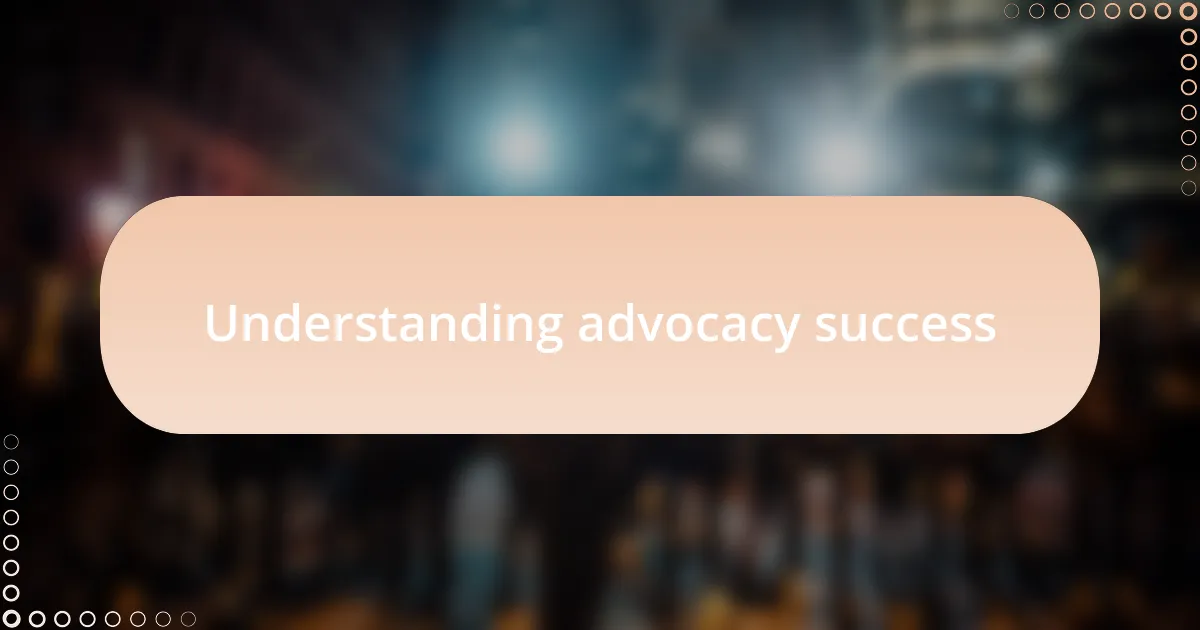
Understanding advocacy success
Understanding advocacy success means looking beyond mere numbers and metrics. For me, it’s often about the powerful stories behind the movement. I recall a rally I attended where a veteran shared how war had changed his life forever; his raw emotion drove home the impact of our advocacy, reminding me that success isn’t solely measured in policy changes.
When I think about what truly signifies success, I often find myself wondering about community engagement. Have you ever witnessed a person transform after joining a cause? I have. I once saw a quiet individual become a passionate speaker at our local meetings, inspiring others to join us in our anti-war efforts. This shift not only enriched our movement but also reflected a deeper understanding of how advocacy can empower individuals to stand up for their beliefs.
Additionally, the ripple effects of our work can be a profound indicator of success. I remember when a local school incorporated lessons on the consequences of war into their curriculum after our campaign. It felt like a real victory. This shift in education can shape future generations’ perspectives, proving that advocacy can create lasting change beyond immediate results.
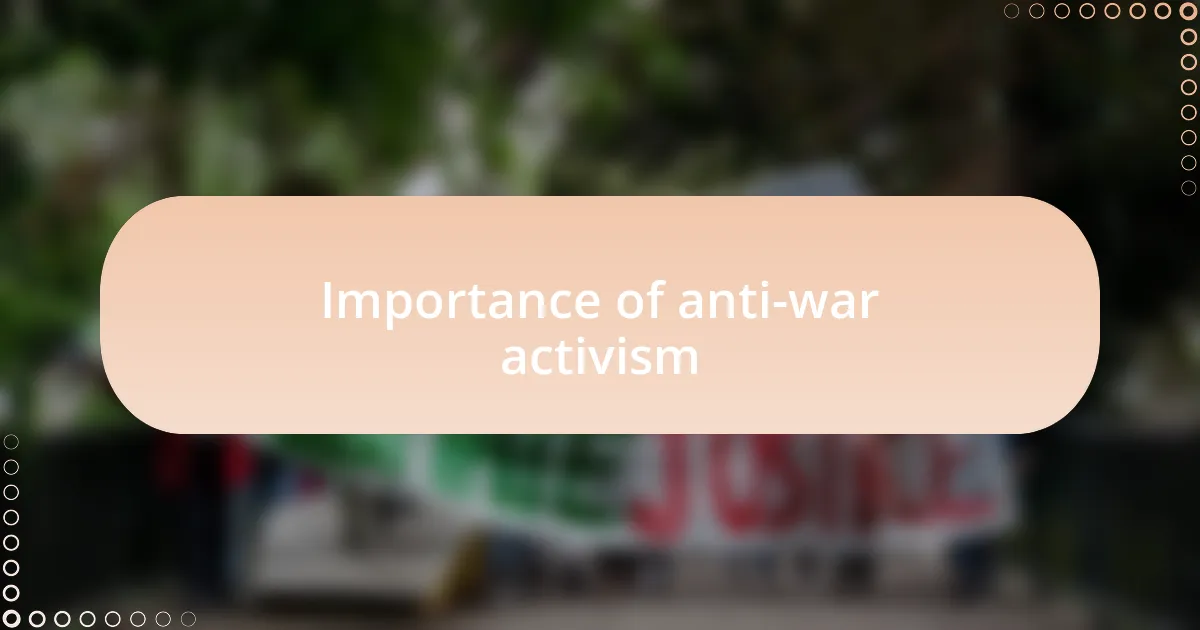
Importance of anti-war activism
The significance of anti-war activism cannot be overstated, as it serves as a vital voice against the devastation that war brings. I remember vividly the stark images of war zones broadcast on the news—the chaos, the pain, the families torn apart. Those visuals instilled in me a deep obligation to advocate for peace, as it became clear that our activism plays a crucial role in preventing such tragedies from repeating.
Anti-war activism also holds the power to unite diverse groups, fostering collaboration across various communities. During a local peace march, I saw activists from different backgrounds come together, exchanging stories and building solidarity. It was a reminder that our shared humanity transcends borders and beliefs, reinforcing the idea that collective action is essential in the fight for peace.
Moreover, anti-war efforts encourage crucial conversations about military spending and its opportunity costs. Have you ever considered how much of our resources could go towards education and healthcare instead of arms? These discussions are vital, as they challenge the status quo and push us to envision a society where prioritizing compassion over conflict could lead to a more prosperous future for everyone.
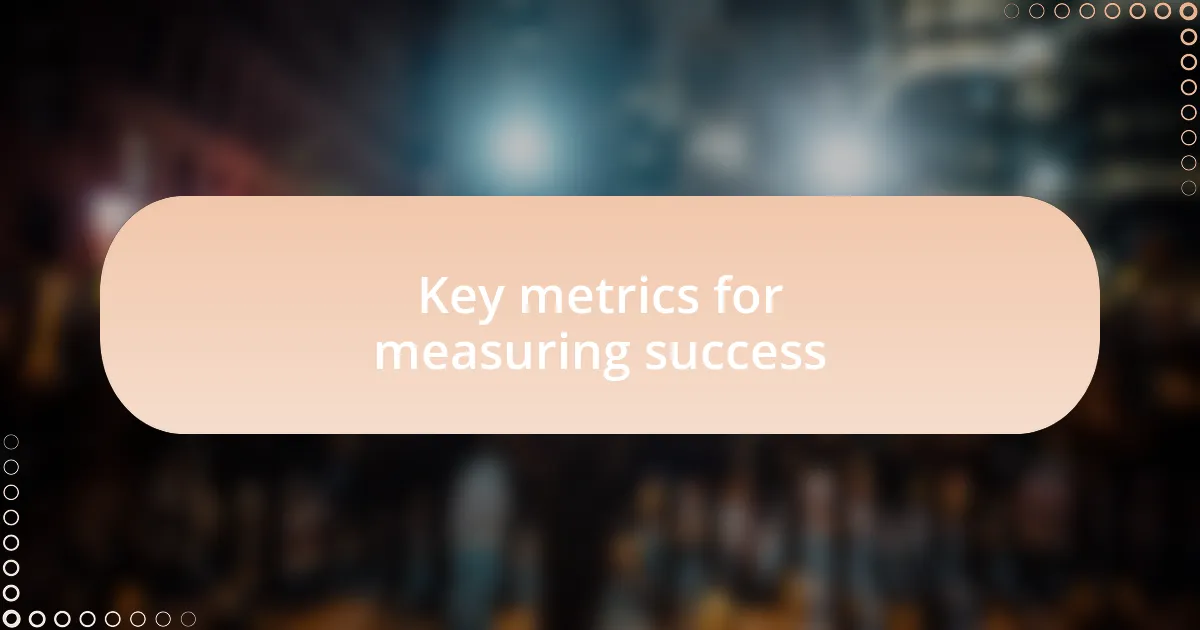
Key metrics for measuring success
One key metric for measuring success in anti-war activism is the level of public engagement. I recall the excitement felt during a recent rally where thousands gathered, holding signs and chanting for peace. Seeing so many people motivated to stand up for a shared cause made me realize that public turnout often translates to increased awareness and support within the community. It leaves me wondering, how can we channel this energy into sustained advocacy efforts?
Another important metric is the impact on policy change. I’ve witnessed firsthand how persistent protests and campaigns can lead to lawmakers reconsidering military budgets and foreign policies. For example, after a vigorous campaign against a particular arms deal, I was amazed to see the legislators respond by proposing amendments to the budget, showcasing the power of grassroots advocacy. Isn’t it powerful to think that our voices can shape the very laws that govern us?
Lastly, assessing the transformation of discourse around war-related issues is crucial. I remember a community forum I attended where once-divisive opinions were openly discussed, leading to a more nuanced understanding of war. The shift in conversation often indicates a deeper societal change, suggesting that our efforts are not just noise, but rather a catalyst for re-evaluating deeply held beliefs. How can such dialogue pave the way for lasting peace? It’s a thought-provoking question that underscores the need for continued advocacy.
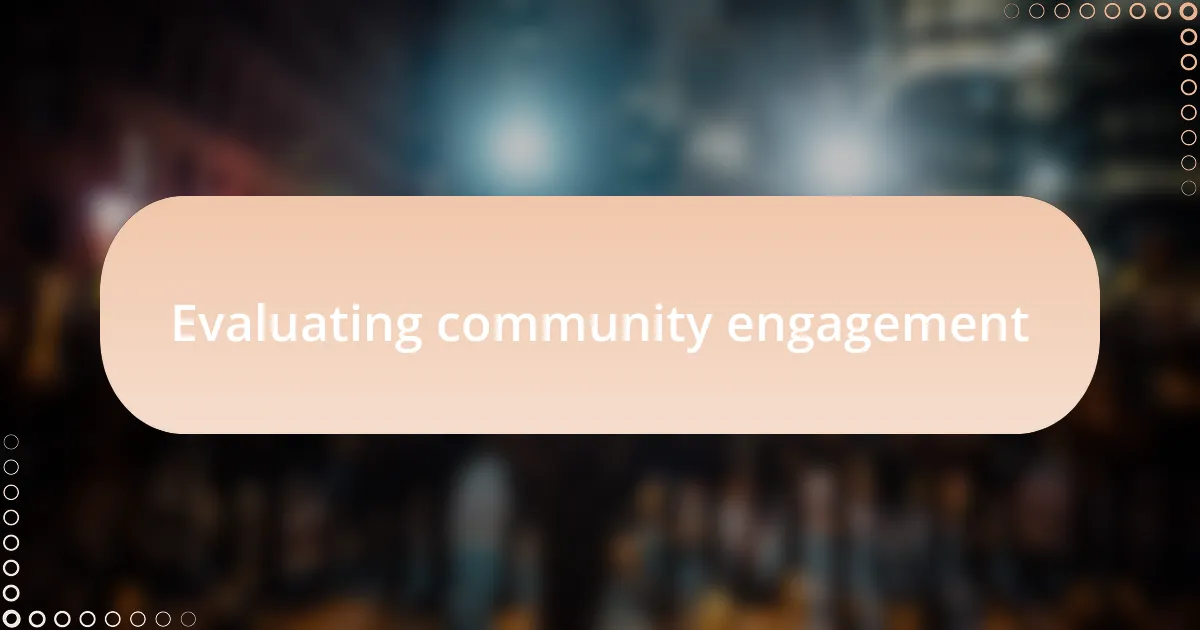
Evaluating community engagement
Evaluating community engagement in anti-war activism can hinge on the types of interactions we foster. I recall organizing a local workshop where participants shared personal stories about the impacts of war on their lives. The emotional resonance in that room was palpable, breaking down barriers and building empathy—this kind of engagement is invaluable for cultivating a supportive community around anti-war efforts.
I often reflect on how social media serves as a barometer for community engagement. During one campaign, our posts on various platforms sparked a lively debate among different factions in our town. Observing how individuals shared their contrasting views made me realize that these discussions not only broaden awareness but also create a stronger network of advocates. Have you ever considered how even online disagreements can fuel a deeper understanding of our shared mission?
Another aspect to gauge engagement is through volunteer involvement. The joy I felt when a diverse group came together to organize a peace march was unforgettable. Watching new faces step up, eager to contribute their time and talents, highlighted how active engagement can ignite a sense of shared responsibility. How do we ensure that this momentum continues beyond a single event? It’s essential to create pathways for ongoing participation, fostering a culture of long-term commitment to our cause.
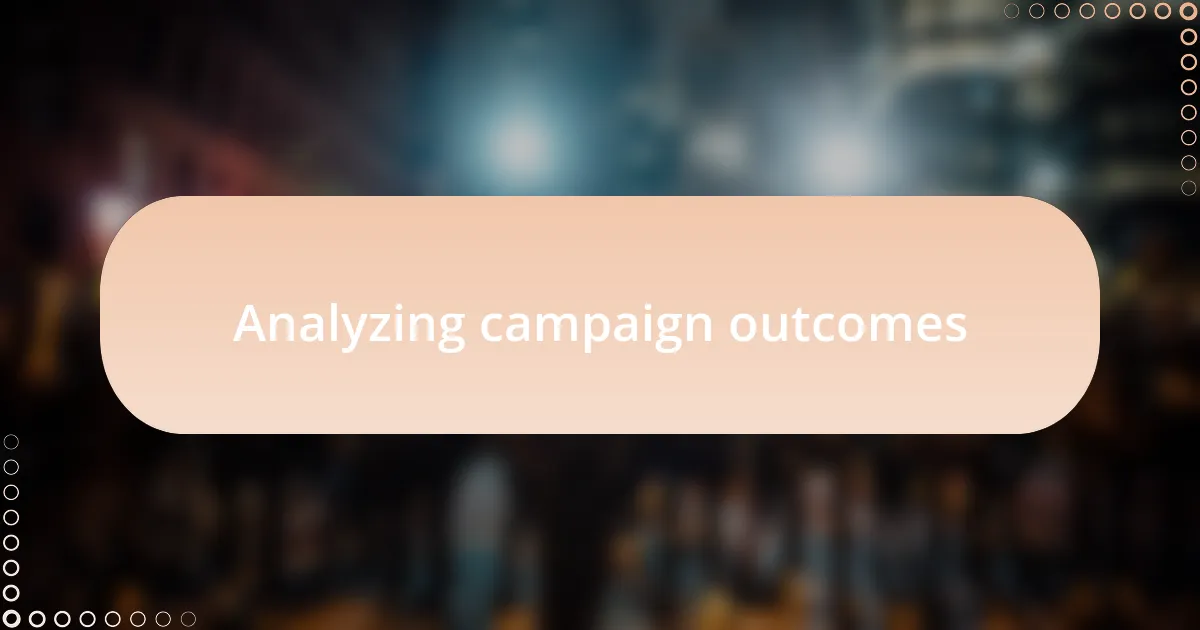
Analyzing campaign outcomes
Assessing the outcomes of anti-war campaigns can often be challenging, yet revealing. I remember a time when we launched a petition to advocate for a peaceful resolution to an ongoing conflict. The moment we received over a thousand signatures in just a week felt like a small victory, but it didn’t stop there. This quantitative success pushed us to analyze the qualitative feedback we gathered, which truly illuminated the diverse perspectives within our community.
In another instance, I tracked the ripple effects of an educational seminar we held. The way attendees eagerly shared our materials with their networks made me realize that success isn’t merely about attendance but rather how the information proliferates. This inspired me to ask: how do we measure the long-term impact of the knowledge shared? By revisiting participants weeks later, we observed sustained discussions and even new advocacy initiatives taking shape. Witnessing this transformation reinforced my belief that the seeds we plant can lead to unforeseen growth.
Visual metrics also play a significant role in understanding campaign outcomes. During a grassroots rally, I noticed the transformation in the crowd’s energy through social media engagement. The boost in hashtags and shares after the event provided tangible evidence of our campaign’s reach. It prompted me to reflect on the question: how can we leverage these insights for future actions? Each hashtag not only amplified our message but also forged connections with others who felt inspired to join our cause.
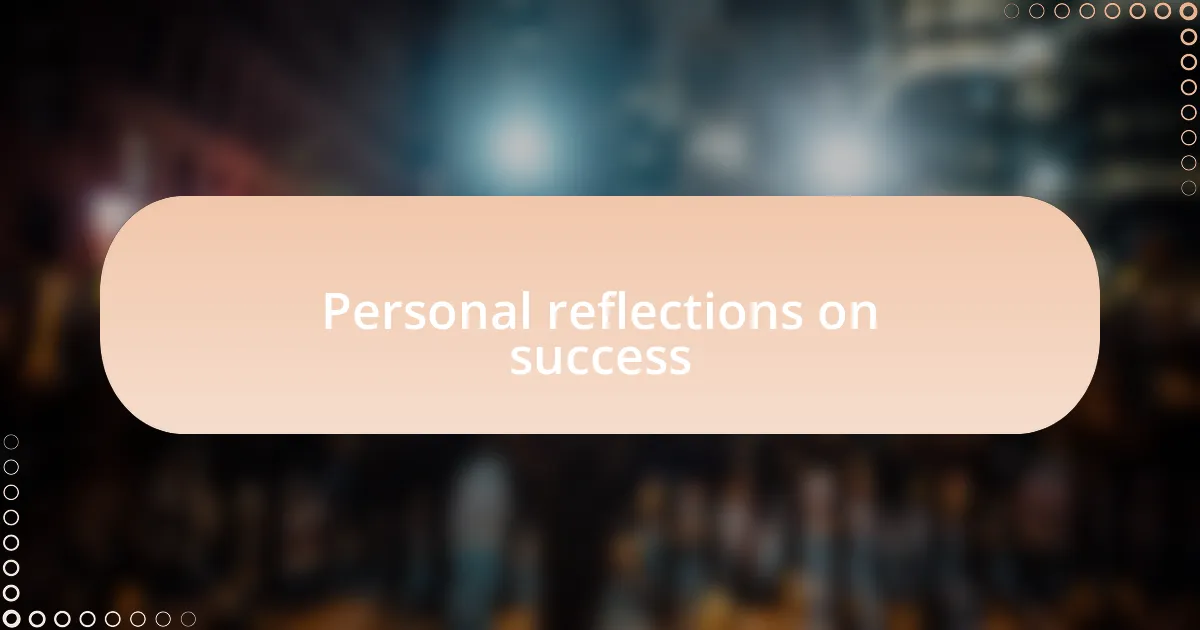
Personal reflections on success
Reflecting on success in advocacy often means measuring moments that might not seem significant at first glance. I recall the quiet conversations I had with a friend after a particularly challenging protest. We shared our frustrations, but also our small victories — strangers coming up to us, expressing their newfound awareness. That exchange reminded me that advocacy is as much about individual connections as it is about bigger campaigns.
I find myself pondering the impact of emotional resonance in our work. There was a time when a heartfelt letter from a supporter moved me to tears. They shared how our efforts inspired them to speak out in their own community. It struck me that success isn’t always about numbers but the stories that emerge from our actions. How do we quantify the courage instilled in others? It’s a question that lingers with me, emphasizing the profound influence our collective voices can have.
Sometimes, I think about the ripple effect our success can create. After attending a conference, I returned home filled with hope as I connected with activists across the globe. I remember asking myself: how many of us have shared a similar story that ignited a spark of change? Each connection fuels my belief that advocacy thrives not just on achievements but on the inspiration we pass along, creating a network of engaged individuals ready to stand for peace.
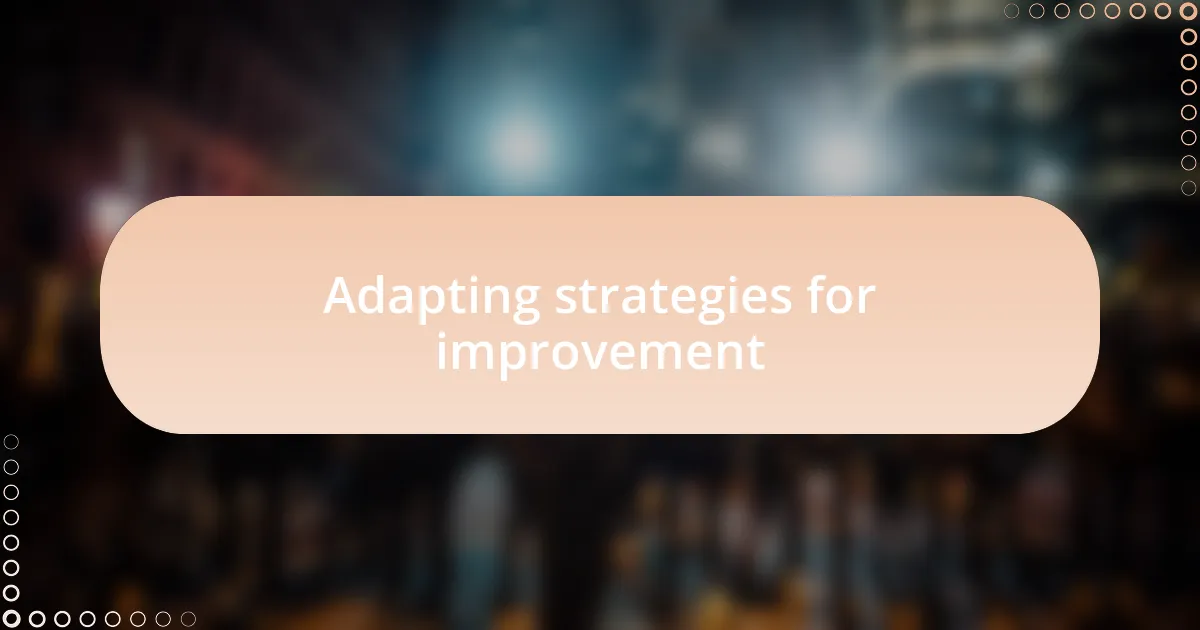
Adapting strategies for improvement
Adapting strategies for improvement often starts with assessing what’s resonating with your audience. I once realized that my messaging around anti-war initiatives fell flat because it lacked personal stories that connected on an emotional level. After incorporating individual accounts from affected civilians, I noticed an uptick in engagement. This taught me that flexibility in approach is essential for truly reaching hearts and minds.
I’ve learned that feedback loops can be invaluable in this journey. There was a time when I openly asked for critiques after a campaign. Some responses were tough to hear, but they were a goldmine for growth. Isn’t it fascinating how discomfort can pave the way for better strategies? Embracing constructive criticism has allowed my advocacy to evolve in ways I hadn’t anticipated.
Continuous learning is crucial, and I often seek inspiration from other movements. I attended a workshop focusing on community organizing, and it shook my perspective. Seeing how others successfully mobilized grassroots efforts made me rethink my own tactics. What can I borrow from their successes? This willingness to adapt keeps my advocacy fresh and responsive to the changing landscape of activism.